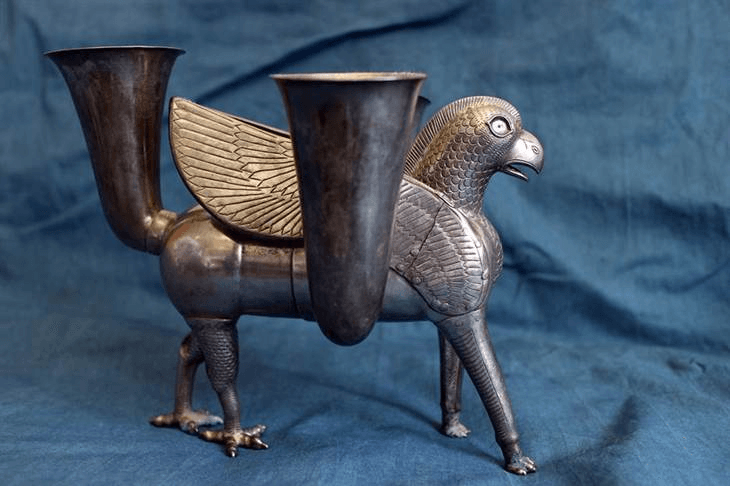
NBC news carried an interesting story last week highlighting a decision by the U.S. Department of State to return a million-dollar cultural artifact to Iran that had been seized by U.S. Customs a decade ago. The return of the Persian Griffin, long sought by Iranian officials, may not seem like a big deal against the backdrop of the recent exchange of letters and phone conversation between President Obama and Iranian President Rouhani. I have no idea whether this particular gesture will resonate in Iran, but we should not underestimate the significance of such cultural heritage for people around the world.
Some of the most undervalued tools in the public diplomacy toolkit explicitly recognize the fact that more often than not, a nation’s sense of self is closely connected to its cultural heritage. The value of a particular cultural monument, an example of historic architecture, or a specific artifact in a museum goes well beyond its retail or tourism value, but instead is truly priceless in the eyes of those who consider it a part of their national identity. There are well-known examples of how disputes over ownership of such culture, including the Elgin Marbles or the Preah Vihear Temple, have led to tense international relations and even armed conflict. Few are aware, however, of how we routinely use cultural heritage to our advantage in public diplomacy.
One of the best such tools is the Ambassador’s Fund for Cultural Preservation administered by the U.S. Department of State’s Bureau for Education and Cultural Affairs. Under this program, public diplomacy officers at U.S. embassies and consulates all over the world work with local partners to identify worthy cultural heritage preservation projects and submit proposals for review and approval in Washington. Each year a few dozen of the best proposals are funded at a total cost of about $7 or 8 million. In terms of bang-for-your-buck, it is hard to find a better investment of public diplomacy resources. Perhaps every day somewhere in the world, a U.S. Ambassador is visiting an archaeological site, a museum, or some other cultural venue to cut a ribbon or otherwise celebrate a project that tangibly demonstrates U.S. respect for local culture and traditions. In my experience, these events are widely covered by the local media and generally resonate with the local population in a way that signing ceremonies or diplomatic speeches can never hope to match.
I will cite just one example from my own personal experience. In East Timor, a newly-independent country in Southeast Asia, traditional “sacred” houses all across the country were destroyed during the Indonesian occupation of that territory up until the late 1990s. Several years ago, the Ambassador’s Fund for Cultural Preservation approved a U.S. Embassy project to work with the new Timorese Ministry of Culture and local villages to rebuild several of these houses. Over the course of a few years at numerous nationally-televised groundbreaking and ribbon-cutting events, the U.S. Ambassador and the Timorese Secretary of State for Culture celebrated the “rebuilding” not only of these cultural landmarks, but also the Timorese nation itself. At the cost of a tiny fraction of other more expensive development initiatives, this simple project showed all of the Timorese people that we respected them and their culture and were working to help them rebuild their country.
As the U.S. Department of State fact sheet last week on the decision to return the Persian Griffin stated — “The return of the artifact reflects the strong respect the United States has for cultural heritage property — in this case cultural heritage property that was likely looted from Iran and is important to the patrimony of the Iranian people. It also reflects the strong respect the United States has for the Iranian people.” The return of that artifact, of course, does not appear to have been the result of a particular preservation program or even particularly costly, but it makes good public diplomacy and policy sense. As for our other public diplomacy programs, like the Ambassador’s Fund, even in an era of limited resources, let’s not be penny wise and pound foolish! We would do well to continue to invest in such programs that help us build the mutual understanding and respect that we depend on to advance our policy goals around the world.
The views expressed in this blog are those of the author and do not necessarily reflect those of the State Department or the U.S. Government. The author is a State Department officer specializing in public diplomacy, currently detailed to the IPDGC to teach and work on various Institute projects.

